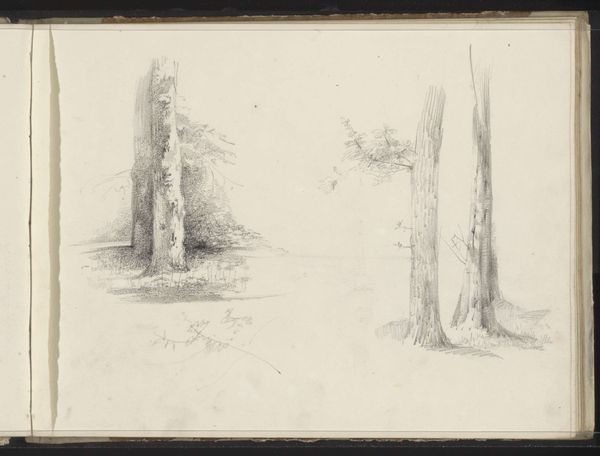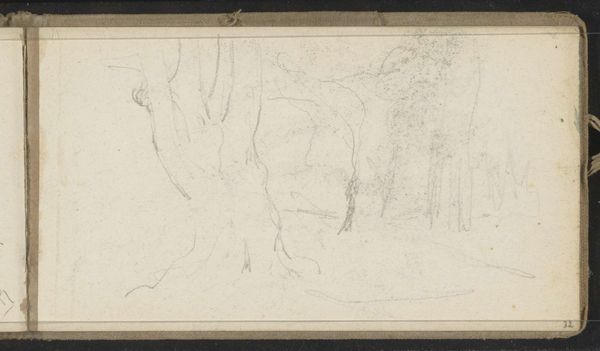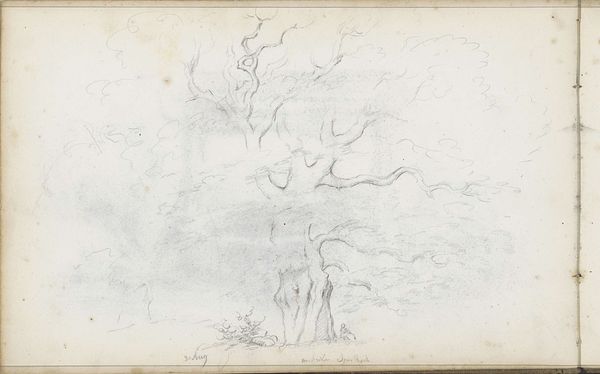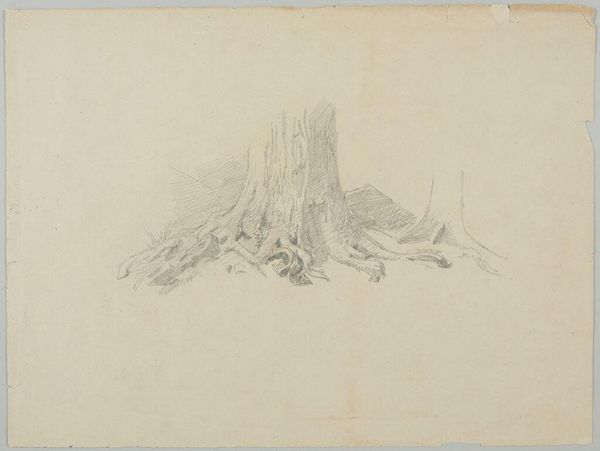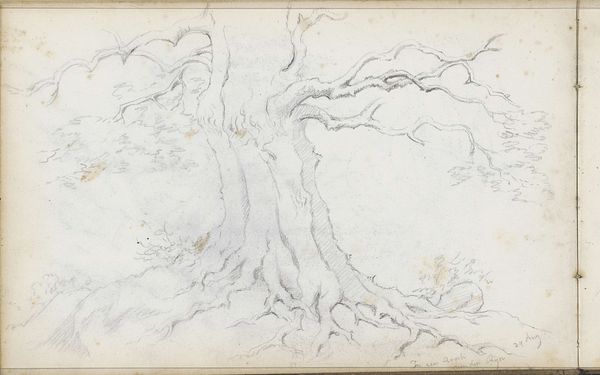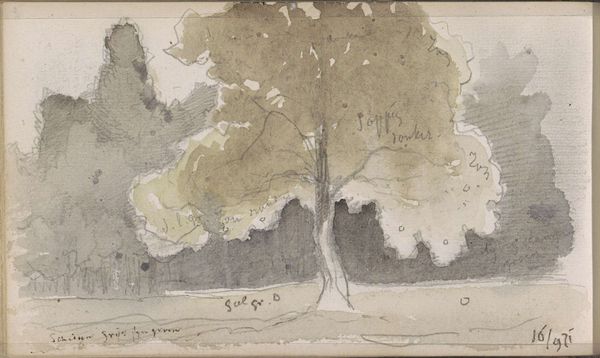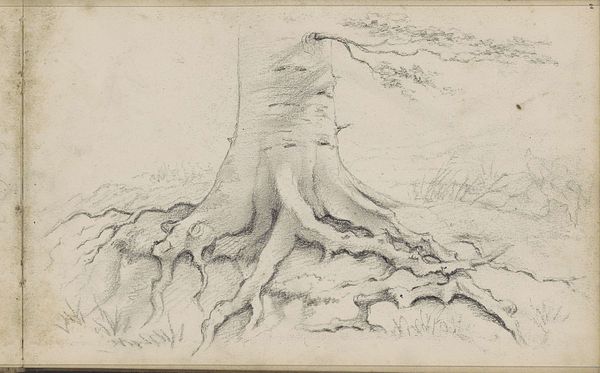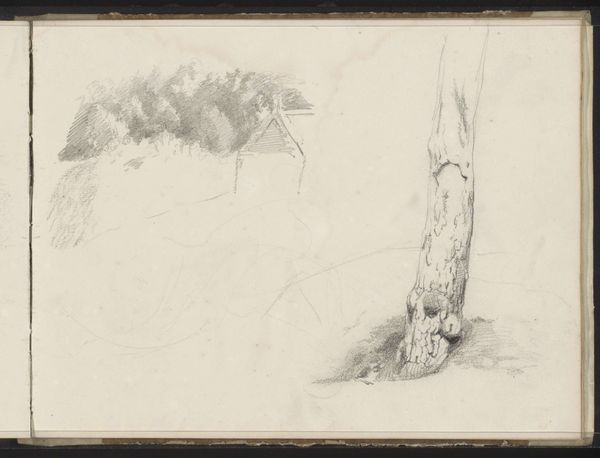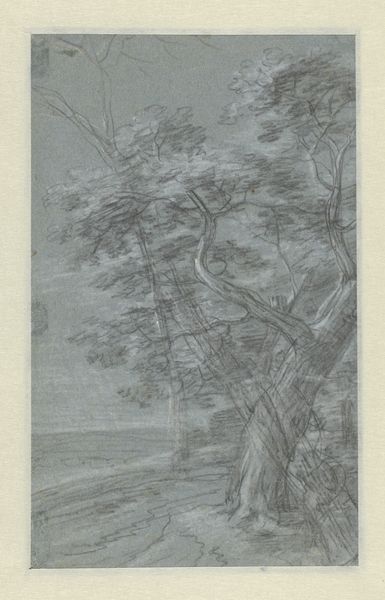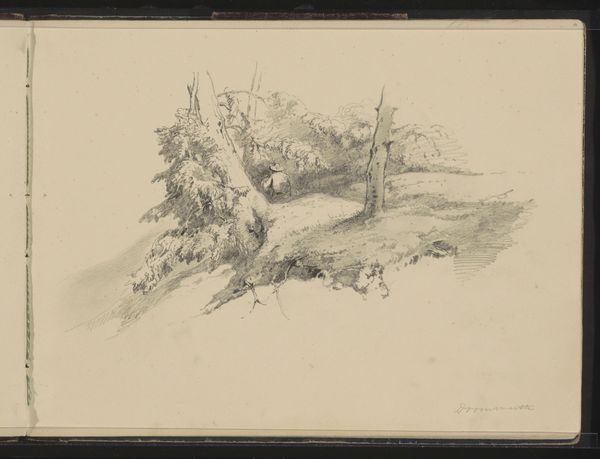
painting, paper, watercolor
#
painting
#
landscape
#
paper
#
watercolor
#
realism
Copyright: Rijks Museum: Open Domain
Johannes Tavenraat made this watercolor painting of tree trunks in 1868. Tavenraat’s artwork is made with watercolor. The artist applied translucent layers of pigment to build up color and form. This technique allows light to penetrate the different layers creating a sense of depth and luminosity. The fluidity of the watercolor enables soft transitions and delicate rendering of details. There is a long tradition of watercolor painting as a preparatory medium, used for sketches and studies. In this case, Tavenraat uses it to capture his observations of nature. As you can see, Tavenraat made a virtue of the watery qualities of the medium, capturing the textures of bark and foliage with great sensitivity. By considering the choice of watercolor, we gain a better understanding of the artist's process and the artwork’s intention. It challenges us to see the value in a medium often regarded as less significant than oil paint, broadening our appreciation for the diverse possibilities within art.
Comments
No comments
Be the first to comment and join the conversation on the ultimate creative platform.
